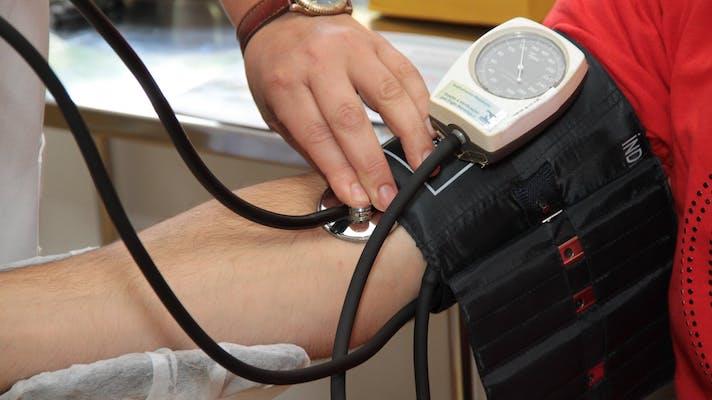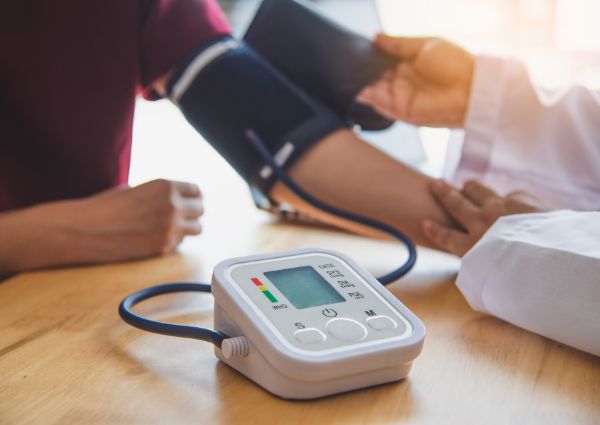The Science Behind the ABPM test in Bangalore and Why It’s More Than Just Numbers
The Benefits of the ABPM Examination for Accurate Blood Pressure Analysis
Ambulatory Blood Pressure Monitoring (ABPM) supplies a sophisticated strategy to examining high blood pressure. This method supplies continual, 24-hour information, catching variations that occur during day-to-day tasks and rest. Such thorough monitoring not just enhances accuracy but additionally exposes vital patterns, aiding to compare true hypertension and problems like white-coat disorder. Understanding these subtleties can lead to much more efficient therapy techniques. What ramifications might this have for person treatment and administration?
What Is Ambulatory Blood Pressure Monitoring (ABPM)?
Ambulatory Blood Pressure Monitoring (ABPM) is a technique that enables continual blood stress assessment over a 24-hour period, supplying a comprehensive photo of a person's high blood pressure variations. ABPM test in Bangalore. This strategy uses a mobile device that instantly gauges high blood pressure at normal periods throughout the day and evening. As people deal with their everyday activities, the gadget catches data mirroring their high blood pressure variants during various times and scenarios, including rest and physical exertion.ABPM is especially helpful for detecting problems such as hypertension, as it can identify in between true high blood pressure and white-coat syndrome, where individuals show raised analyses in medical settings but not in their everyday lives. By using a comprehensive view of high blood pressure changes, ABPM help health care providers in making educated decisions pertaining to medical diagnosis and treatment. Furthermore, it enhances the understanding of blood pressure patterns, allowing customized administration techniques for individuals
Continuous Monitoring for Improved Accuracy
Continuous monitoring of high blood pressure via ABPM significantly boosts the accuracy of analyses contrasted to standard approaches. This strategy allows for high blood pressure measurements at routine intervals throughout the day and night, recording fluctuations that may occur because of daily activities, anxiety, or other variables. Unlike single analyses taken during a center visit, ABPM offers a thorough profile of a person's high blood pressure over a 24-hour period.This continuous evaluation causes extra dependable data, enabling health care companies to determine patterns and prospective concerns that may go unnoticed with sporadic dimensions. It likewise aids compare true hypertension and white-coat disorder, where clients show elevated analyses as a result of anxiety in a scientific setup. By leveraging the advantages of continuous monitoring, ABPM substantially boosts diagnosis and therapy strategies, inevitably adding to far better client end results and more individualized healthcare approaches.
Recognizing Blood Pressure Variability
Blood pressure variability refers to the variations in blood pressure readings that can take place in time because of various factors, consisting of exercise, tension, and circadian rhythms. This variability is significant as it supplies insights into an individual's cardio wellness. ABPM test in Bangalore. Factors such as exercise can temporarily boost blood pressure, while leisure might lead to a decrease. Furthermore, the body's all-natural rhythms can cause blood stress to vary throughout the day, usually being lower during the night and higher during waking hours. High degrees of irregularity have been connected with enhanced risks of cardio events, making it vital for healthcare specialists to keep track of these variations. Understanding blood pressure variability assists in customizing therapy plans and evaluating general health. Precise assessment through approaches like Ambulatory High blood pressure Monitoring (ABPM) can capture these variations, enabling for a much more detailed evaluation of a person's blood pressure profile
Recognizing White Coat High Blood Pressure
White coat hypertension, commonly described as white layer syndrome, is defined by raised high blood pressure analyses in scientific setups because of anxiety or stress. Identifying its symptoms and signs is vital for exact medical diagnosis, as misconception can bring about unneeded treatments. Understanding this phenomenon is vital for effective high blood pressure administration and client care.
Understanding White Coat Disorder
Numerous clients exhibit elevated blood pressure readings in medical setups, this sensation, known as white coat hypertension, can obscure the real state of their cardiovascular health and wellness. This problem happens when individuals experience anxiety or stress during clinical sees, bring about short-lived spikes in high blood pressure. Consequently, doctor may misunderstand these readings as a measure of high blood pressure. White coat disorder highlights the value of exact high blood pressure analysis, as relying entirely on in-office measurements can lead to unneeded treatments or misconceptions concerning an individual's wellness. Comprehending this syndrome is vital for medical professionals, as it highlights the requirement for alternate monitoring methods, such as ambulatory blood stress monitoring (ABPM), to get an extra precise depiction of a client's high blood pressure degrees.
Symptoms and Indicators
Lots of people may experience certain symptoms that recommend the existence of white layer high blood pressure. These symptoms can consist of raised high blood pressure readings throughout clinical check outs, come with by feelings of anxiousness or uneasiness in a professional atmosphere. Individuals frequently report a rapid heart beat or sweating when interacting with medical care professionals, which may aggravate their high blood pressure levels. Furthermore, some people might discover a difference between their in-office blood pressure readings and those taken in your home, where they really feel much more kicked back. Identifying these signs is crucial, as they can suggest that stress and anxiety or anxiousness pertaining to try this medical setups is influencing their blood stress. Comprehending these signs can aid in identifying white layer hypertension and determining the necessity for further analysis.

Importance of Accurate Medical Diagnosis
Accurately diagnosing white coat high blood pressure is critical for effective high blood pressure monitoring. This problem occurs when a person exhibits raised blood pressure analyses in a scientific setting because of anxiety or tension, while normal readings are videotaped in a much more loosened up environment. Misdiagnosis can result in unneeded treatment, subjecting people to potential medication adverse effects with no real health advantage. The usage of ambulatory high blood pressure monitoring (ABPM) is very important in identifying true high blood pressure from white coat disorder. ABPM provides constant blood pressure dimensions over 24-hour, enabling a complete evaluation that can help doctor make educated decisions. Eventually, accurate recognition of white layer hypertension warranties individuals receive ideal treatment and avoids the mistakes of mismanagement.
Analyzing Nocturnal Blood Pressure Patterns
Assessing nighttime high blood pressure patterns is necessary for comprehending an individual's total cardiovascular health. Nighttime dimensions can expose considerable fluctuations in high blood pressure, which might suggest high blood pressure variability. In addition, these patterns are very closely correlated with heart wellness, highlighting the importance of constant monitoring past basic workplace gos to.
Relevance of Nighttime Measurements

Nighttime high blood pressure measurements are typically essential for understanding an individual's total cardio health. These analyses give crucial understandings right into exactly how blood stress acts during rest, which can differ significantly from daytime degrees. Keeping an eye on nocturnal blood pressure permits for the identification of uncommon patterns, such as non-dipping or reverse-dipping phenomena, which may suggest a raised risk for cardiovascular occasions. In addition, nighttime evaluations can aid evaluate the efficiency of antihypertensive treatments, ensuring that medicines are properly taken care of. By capturing high blood pressure adjustments during the evening, healthcare experts can establish extra personalized treatment plans, eventually boosting person outcomes and minimizing the chance of long-term problems related to high blood pressure. This stresses the significance of comprehensive high blood pressure examination throughout the day and evening.
Detecting Hypertension Variability
How can the variability of nocturnal blood pressure patterns inform hypertension management? The assessment of nocturnal high blood pressure with the Ambulatory Blood Pressure Monitoring (ABPM) examination exposes important variations that commonly go unnoticed in conventional dimensions. These patterns can suggest the presence of "non-dipping" high blood pressure, where blood stress fails to go down during rest, suggesting an enhanced cardiovascular risk. By recognizing such irregularity, medical care providers can customize interventions much more effectively, adjusting therapy plans based on the individual's certain nighttime blood pressure habits. Recognizing these patterns additionally aids in reviewing the efficacy of antihypertensive drugs, ensuring that individuals accomplish optimal blood pressure control throughout the night and day. Nighttime assessment comes to be vital in detailed high blood pressure management.
Connection With Heart Health
Recognizing nocturnal high blood pressure patterns not only aids in high blood pressure management however also has significant implications for heart health. Study suggests that irregular nocturnal blood pressure analyses, such as non-dipping or reverse dipping patterns, are linked with enhanced cardio risks. During sleep, blood pressure normally decreases, a phenomenon crucial for cardio healing. When this decrease is missing, it might signal underlying problems such as autonomic dysfunction or boosted arterial rigidity. In addition, individuals with raised nighttime high blood pressure go to an enhanced risk for cardiac arrest and stroke. Consequently, making use of ambulatory blood stress monitoring (ABPM) to assess these nighttime patterns can give vital insights, permitting customized interventions that better safeguard heart health and enhance general patient outcomes.
Tailoring Treatment Plans Based Upon Real-Life Information
Customizing treatment strategies based upon real-life information involves leveraging continual high blood pressure monitoring to develop customized health care techniques. The Ambulatory Blood Pressure Monitoring (ABPM) test offers a complete profile of a client's blood stress variants throughout everyday tasks. This in-depth data permits health care providers to recognize patterns that may be neglected in standard office visits.By assessing variations in high blood pressure during various times and conditions, medical professionals can readjust medicines, dosages, and way of living suggestions to better suit individual client continue reading this needs. This tailored technique not only boosts the efficiency of therapy plans yet also lowers the probability of adverse responses to medications.Furthermore, real-life data can disclose possible triggers for high blood pressure, bring about positive interventions. Generally, tailoring therapy based upon constant monitoring promotes an extra reliable, patient-centered approach to handling high blood pressure and improving long-lasting wellness results.
Improved Patient Compliance and Interaction
While typical monitoring methods may limit patient involvement, using Ambulatory High blood pressure Monitoring (ABPM) greatly boosts person conformity and interaction in their own health care. By allowing people to wear a mobile tool that records high blood pressure over 24-hour, ABPM empowers individuals to take an energetic function in their wellness administration. This continuous monitoring provides a more extensive view of high blood pressure fluctuations, motivating patients to recognize their condition better.Moreover, ABPM cultivates an atmosphere where individuals can review their analyses with doctor extra meaningfully, resulting in notified decision-making. Patients come to be more spent in adhering to prescribed therapies and lifestyle alterations when they see real-time information reflecting their health status. The shift from passive individual to energetic collaborator not just enhances compliance yet additionally improves overall health results, making ABPM a valuable device in cultivating individual interaction in hypertension management.
Often Asked Questions
How much time Does an ABPM Examination Generally Last?
The ABPM test usually lasts 24 hours. Throughout this duration, it measures blood pressure at regular intervals, supplying a thorough analysis of a patient's high blood pressure patterns throughout their day-to-day activities and rest.
Exist Any Threats Related To ABPM Testing?

Can ABPM Be Made Use Of for Youngsters and Teenagers?
ABPM can be used for children and teenagers, offering important insights right into their blood pressure patterns. Nonetheless, appropriate tools sizing and interpretation by skilled professionals are vital to assure precise analyses and avoid misdiagnosis.
Exactly How Is ABPM Different From Traditional Blood Pressure Monitoring?
ABPM differs from typical monitoring by offering continual high blood pressure readings over 1 day, capturing variations throughout daily activities and rest, whereas traditional techniques usually count on single measurements, potentially missing vital variations in blood pressure.
What Should Clients Do Throughout the ABPM Examination?
Throughout the ABPM examination, people ought to preserve typical tasks while staying clear of heavy exercise, excessive caffeine, and cigarette smoking. They must also keep their arm still when the device pumps up, making certain accurate readings throughout the monitoring period.